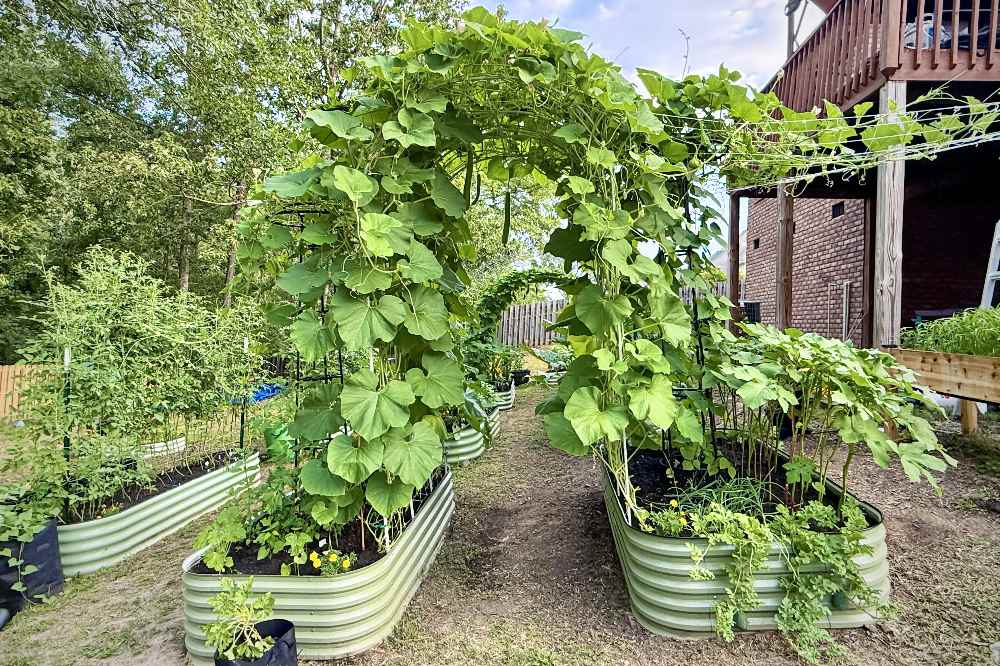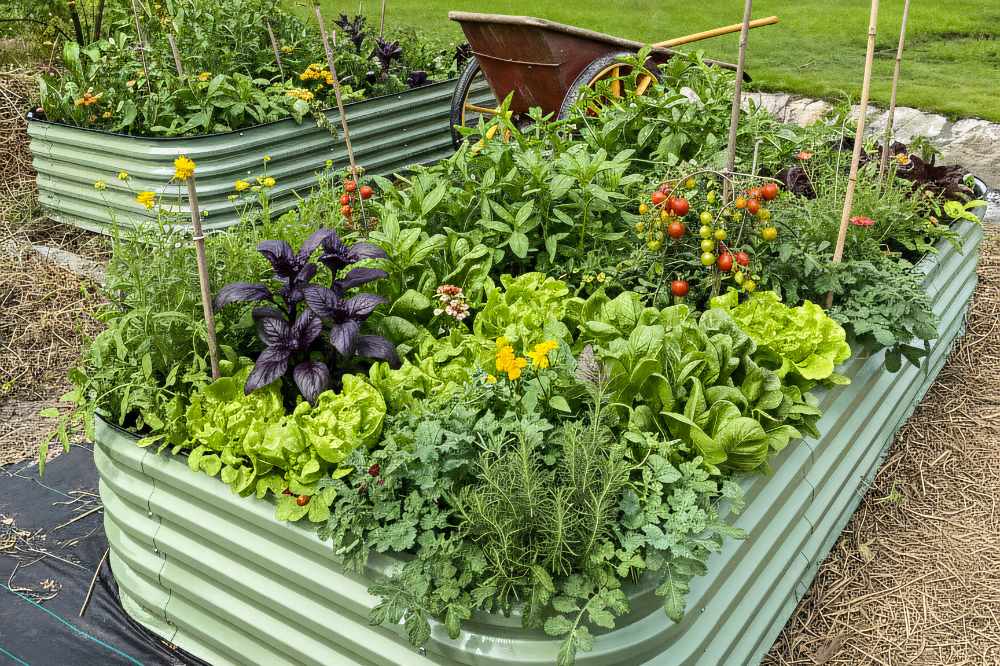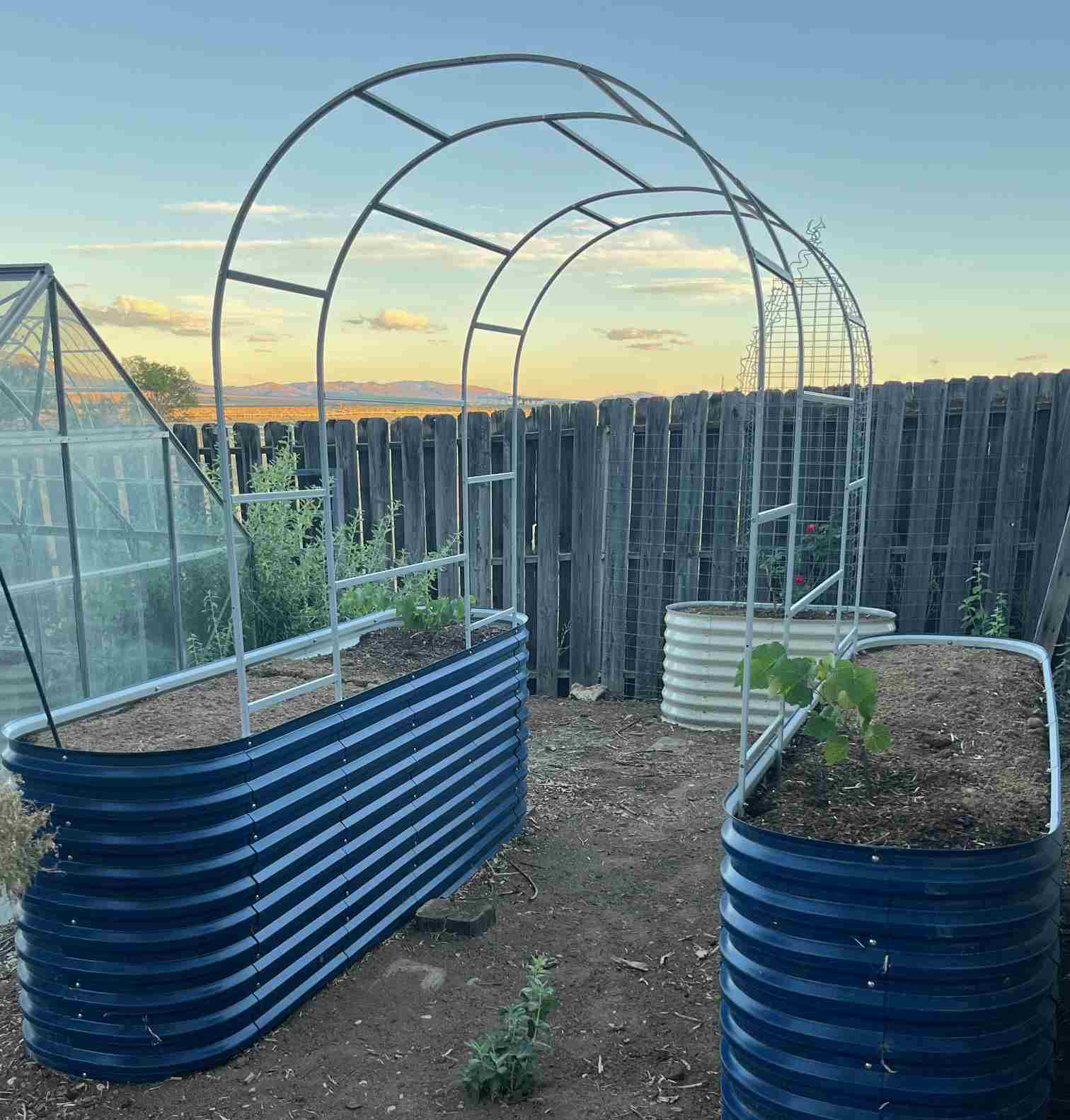The Ultimate Guide to Composting

Compost is something many gardeners use in their gardens and is a much-favoured addition to help enrich the soil and improve plant growth. But what is compost? Compost is the result of a natural process that breaks downs organic matter, whether it’s dead plant growth or fresh grass trimmings.
Various microorganisms and insects help to break down the decomposing organic matter resulting in a nutrient-rich substance that can be applied straight to your garden (just like fertiliser), including in a raised garden bed. The result is a soil-like substance which looks and smells like soil.
Even though any organic matter does eventually decompose, it can sometimes take months or even years if the conditions aren’t right. A dedicated compost area can help speed up the process by ensuring the conditions are right for the bacteria and insects.
Benefits of compost
Compost is very rich in carbon and nitrogen nutrients, which is why it is so favoured by gardeners and farmers for gardens and agriculture respectively for improved growth. Here are some great benefits for why you should get started:
- Composting helps cut down on waste and reduces landfill waste.
- Helps provide rich nutrients to improve plant growth.
- Greater enriched soil that retains moisture much better, especially in metal raised beds.
- A popular alternative to chemical fertilisers which can be a potential environmental and health hazard.
- Helps support microbes that aerate the soil and break down nutrients for absorption.
- Cuts methane emissions that come from anaerobic decomposers.
Tips for Getting Started with Composting
While composting is something anyone can get started with straight away, some tips can help improve your success in getting that nutrient-rich gold for your garden! Here are some tips to get you off to a good start:
1. Open or closed compost

Compost piles can either be open or closed. Depending on how quickly you want your compost to turnover and garden space will determine whether to go for open or closed compost. Here’s the reason why.
Open compost is a pile that is left out in the open without the use of a container. Open compost piles can take longer to decompose, especially in colder weather. Also, during hot weather, your compost pile may dry out meaning they are much harder to manage. Open compost piles are favoured by those with larger garden spaces.
Alternatively, you can set up a compost pile in a container (or closed compost). Closed compost can either be in a compost bin or tumbler. Closed bins usually have a lid at the top for adding new material with a hatch at the bottom to take your compost.
Closed compost containers help provide warmth, airflow and moisture that’s needed to support the microorganisms and insects at work inside. A compost tumbler helps make it easier to turn and improve airflow, but they usually hold less and don’t encourage worms to thrive (which are beneficial at helping your compost).
Even though a closed compost pile helps better support your compost pile, you still need to follow these other tips too.
2. Get off to a good start
If you want to get started with composting after finding out about the great benefits it can provide, you’ll no doubt want to get on straight away. But before you do, there are a few things you need to know. Firstly, how to get off to a good start.
Only adding organic matter together into a pile won’t do much for creating compost. That’s because there’ll be no bacteria or microorganisms to get the ball rolling. Instead, whenever starting a compost pile, you should consider adding a top layer of soil.
The microbes and bacteria needed for decomposition will already be in the soil, so adding this will help to improve the speed of your compost pile and get you off to a good start. Also, consider adding some insects.
Anything from beetles, slugs, worms, and centipedes are all great additions to a compost pile. For maximum effect, provide plenty of food and bedding soil for these insects to survive and improve their work creating your compost.
3. Break things down

Another tip for getting your compost pile off to a good start is to consider breaking down what you are going to add. The more you break things down, the better and quicker you’ll see your compost pile turnover.
That’s because bacteria and microorganisms have a much harder time decomposing larger and heavier items than something small and lightweight. Adding large bulky items, such as sticks and large amounts of grass cuttings, will slow down the speed of your compost.
Breaking things down and adding smaller quantities of organic matter will help to benefit the decomposition. The microbes doing all that hard work will thank you for it!
4. Get the balance right
Not every compost pile will be successful. One reason is because of an imbalance in the organic matter put into the compost pile. If a compost pile is too wet and moist, it will emit a bad smell. It also doesn’t help create an effective compost pile. The same goes if it’s too dry.
A compost pile needs to find the right balance. To find the right balance, you need to consider when you put the organic matter onto your compost pile. Typically, compost matter is split into 2 categories: green and brown.
Green organic matter increases moisture. Anything from grass cuttings, plants, food scraps as well as fruit and veg trimmings. If your compost is looking too dry, you should add more green organic matter to help improve decomposition. Green organic matter contributes to nitrogen-rich compost.
Brown organic matter decreases moisture. Dead leaves, twigs, cardboard, and eggshells are considered brown organic matter. A compost pile that is too moist should have brown organic matter added. Brown organic matter contributes to carbon-rich compost. Fallen leaves make a great addition to your compost.
Getting the balance right between nitrogen-rich and carbon-rich materials will help to create an efficient compost pile. Too much carbon matter and you’re left with a dry compost pile, too much nitrogen and you’ll get a smelly compost pile and the possibility of maggots.
5. Stay away from adding these
There are plenty of things you can add to your compost to help benefit from nutrient-rich compost. However, there are also some things you avoid adding completely:
- Weeds, either dead or freshly pulled up as can start growing in your compost. They’ll grow just about anywhere else without effective weed control!
- Any oily or greasy food waste as it disturbs the moisture balance of the compost.
- Acidic foods, including fruit, as the acid is harmful to decomposing bacteria and microbes.
- Meat, dairy or baked food waste as the smell can attract unwanted rodents.
- Sawdust that is sourced from any treated wood as the chemicals affect the compost integrity.
- Animal waste due to the health hazards it can cause.
6. Turn, turn, turn

Many will make the easy mistake of adding matter to a compost pile and leaving it, only then to be disappointed when you don’t get nutrient-rich compost. The reason is because of the lack of airflow in your compost.
Creating an airflow is essential for creating a successful compost pile. Regularly turning your compost helps to create an airflow that supports the decomposition of microbes. It also helps to ensure your compost stays sufficiently moist.
Depending on the contents and container will determine how regularly you should turn your compost pile. Open compost piles should be turned every 5 to 7 days while closed containers should be turned every 3 to 4 days. The moister your compost, the more often you’ll need to turn it also.
Conclusion
If you haven’t started composting already, following these tips will help get you off to a good start. Also, as we enter autumn and the leaves start falling from the trees, you’ll have a good source for getting started with your compost too. Happy composting!
By Aaron Middleton
Author bio: Aaron Middleton is a content creator for Hilltop, regularly writing about gardening and garden furniture.


